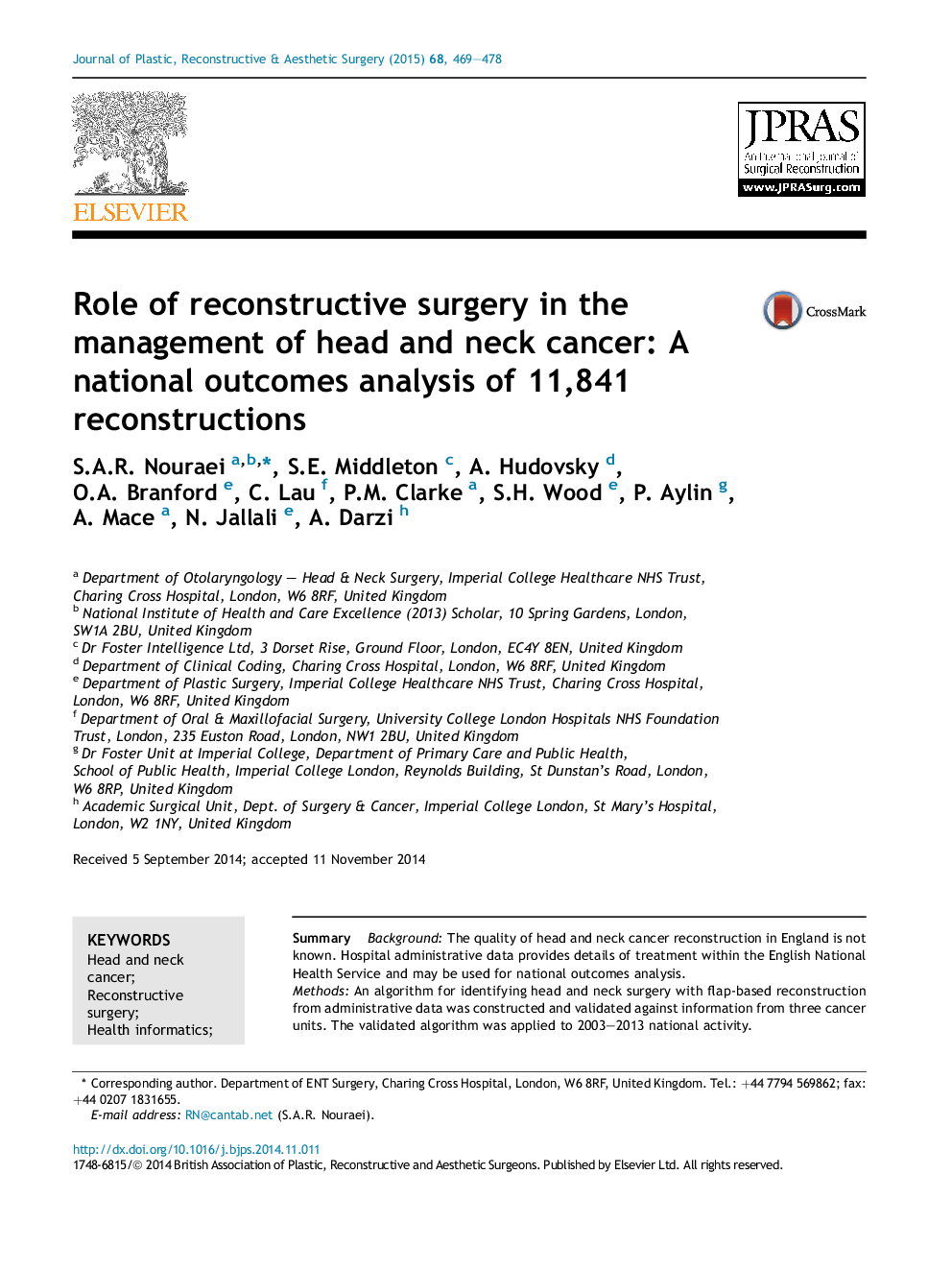| Article ID | Journal | Published Year | Pages | File Type |
|---|---|---|---|---|
| 4118092 | Journal of Plastic, Reconstructive & Aesthetic Surgery | 2015 | 10 Pages |
SummaryBackgroundThe quality of head and neck cancer reconstruction in England is not known. Hospital administrative data provides details of treatment within the English National Health Service and may be used for national outcomes analysis.MethodsAn algorithm for identifying head and neck surgery with flap-based reconstruction from administrative data was constructed and validated against information from three cancer units. The validated algorithm was applied to 2003–2013 national activity.ResultsThe algorithm was 91% sensitive and over 99% specific. Its application to administrative data identified 11,841 patients and demonstrated an increase of 52% in reconstruction-containing head and neck cancer surgery in the past decade. There were 7776 males and mean treatment age was 62 years. Oral cavity was the commonest primary site (n = 7567; 64%) and 7575 patients (64%) underwent primary surgery. The commonest procedure was floor-of-mouth excision (n = 3614) and 9749 patients had a neck dissection. The most commonly used flap was the radial forearm (n = 4429). Flap failure occurred in 496 (4.2%) patients. It increased the mean length of stay from 22 to 41 days (P < 0.00001), and the odds ratio of in-hospital death to 2.37 [95% confidence interval 1.66–3.38; P < 0.0001]. Lethality of reconstructive failure was not uniform and was highest when a pharyngolaryngeal flap failed.ConclusionsReconstructive surgery is central to the multidisciplinary management of head and neck cancer. Its quality directly influences patient morbidity and survival. We recommend that analysis of hospital administrative data should be periodically carried out as part of an over-arching quality assurance programme and, particularly for pharyngolaryngeal reconstructions, surgery should be undertaken in units with the best reconstructive outcomes.
